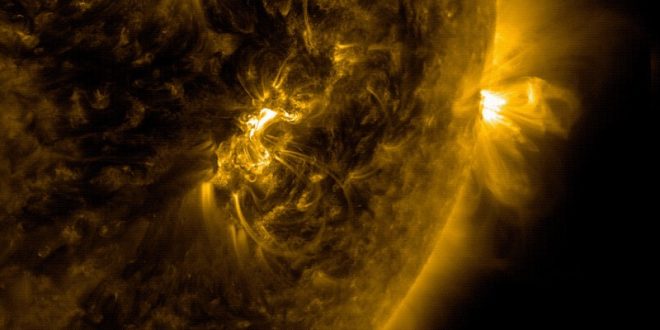For over a week now, our sun has been spewing out a continuous stream of solar flares, causing NOAA Space Weather Prediction Center to issue a geomagnetic storm warning on Tuesday and Wednesday.
Between September 4 and September 11, NASA observed seven flares, all classed in its strongest “X” category, with the most impressive registering at X9.3, a very significant event.
The latest, at X8.2 also a significant flare, peaked at 12:06 p.m. EDT on Sept. 10. It prompted warnings of possible radio blackouts from the Space Weather Prediction Center, which also issued a geomagnetic storm warning for Wednesday and Thursday.
The X9.3 solar flare was named by NASA as the strongest so far in the current solar cycle, a roughly 11-year period that began in December, 2008. The solar activity has been linked to increased aurora activity in the northern skies.
“The current solar cycle … is now decreasing in intensity and heading toward solar minimum,” NASA said, “This is a phase when such eruptions on the sun are increasingly rare, but history has shown that they can nonetheless be intense.”
All the flares have emerged from the same “active region” of the sun, dubbed AR2673.
These events have been extremely intense, but none has caused serious disruption on Earth, and there’s no indication that the solar situation is going to get worse.
But that won’t always necessarily be the case in the future. In 1989, Canada’s Quebec state faced a nine-hour blackout from a solar event called a Coronal Mass Ejection.
Solar flares could also disrupt communications, including crucial satellite guidance system that could affect airplanes.
Agencies/Canadajournal
 Canada Journal – News of the World Articles and videos to bring you the biggest Canadian news stories from across the country every day
Canada Journal – News of the World Articles and videos to bring you the biggest Canadian news stories from across the country every day




Quebec is not a state…………….it is a province.